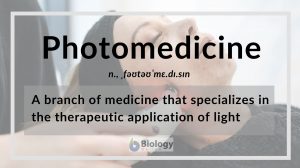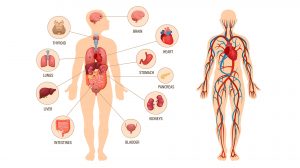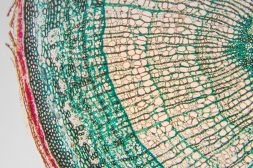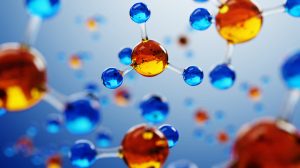
Photomedicine definition:
n., ˌfəʊtəʊˈmɛ.dɪ.sɪn
A branch of medicine that specializes in the therapeutic application of light
Table of Contents
Photomedicine Definition
Photomedicine is a branch of medicine that specializes in the therapeutic application of light. As the name implies, it is “light medicine”; it administers light for medical and health purposes. Light, in this regard, pertains to the non-ionizing electromagnetic radiation with wavelengths ranging from 200 nm to 10,000 nm. (Ref.1) It is currently in use in various medical fields, such as dermatology, oncology, surgery, radiology, and diagnostics. Apart from the therapeutic use of light, photomedicine is also concerned with the diseases and disorders associated with light.
History
The application of light to treat human diseases can be traced back to ancient times. Records from ancient texts suggested that thousands of years ago, people had been treating skin diseases by exposing themselves to sunlight. For instance, sufferers from vitiligo were eating plant extracts and then exposed to the sun as written in the sacred Hindu text Atharva Veda dating from 1400 BCE. (Ref.2) In the 17th century, multifarious cases of human conditions (e.g. skin ulcers) claimed to have recovered from sunlight treatments. (Ref.2) Wounds and tumors apparently healed by exposing them to sunlight. The first reference to photomedicine in modern biology is attributed to the works of the Danish physician Niels Finsen. He used UV light from a carbon arc lamp to treat a facial lesion. His discovery of the use of light as treatment gained him a Nobel Prize for medicine in 1903. (Ref.3) The beneficial effects of light were further investigated in the years that followed. Understanding the mechanism as to how light has such curative effects set it as an authoritative field of medicine.
Mechanism of action
The fundamental particle of light is referred to as a photon. Photons are both a particle and a wave. They are deemed to carry no charge and have no mass. In a biological system, photons are emitted when electrons move from one energy state to another. The effects of photons at the atomic and molecular levels of biological structures and thereby processes implicate the molecular basis of the light’s therapeutic effects.
Examples of photomedicine applications
Photomedicine is used to treat various conditions, such as tissue injuries, psoriasis, seasonal affective disorder, and other circadian rhythm disorders, cancer and tumors, and alopecia. Light is also used for diagnostic procedures. Diagnostic photomedicine involves the use of light for various imaging technologies, e.g. X-ray, MRI, and PET. Other forms of photomedicine include photodynamic therapy (PDT), low-level laser therapy (LLLT), and LED therapy.
See also
References
- BASIC PHOTOMEDICINE. (2020). Photobiology.Info. http://photobiology.info/Photomed.html
- Hamblin, M. R., Carroll, J. D., de Freitas, L. F., Huang, Y.-Y., & Ferraresi, C. (2020). History of LLLT and Photobiomodulation. Low-Level Light Therapy: Photobiomodulation. https://doi.org/10.1117/3.2295638.ch2
- Tiwari, P. M., Bawage, S. S., & Singh, S. R. (2015). Gold nanoparticles and their applications in photomedicine, diagnosis and therapy. Applications of Nanoscience in Photomedicine, 249–266. https://doi.org/10.1533/9781908818782.249
©BiologyOnline. Content provided and moderated by BiologyOnline Editors.







